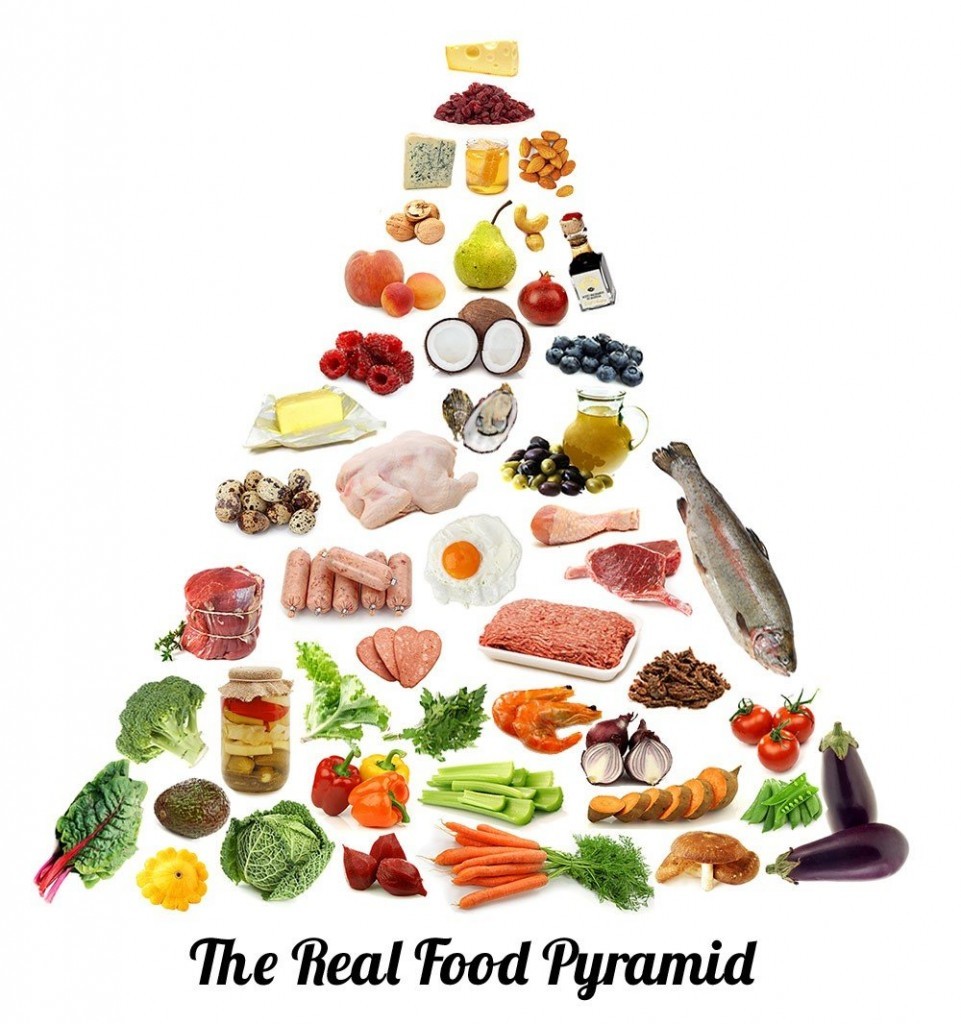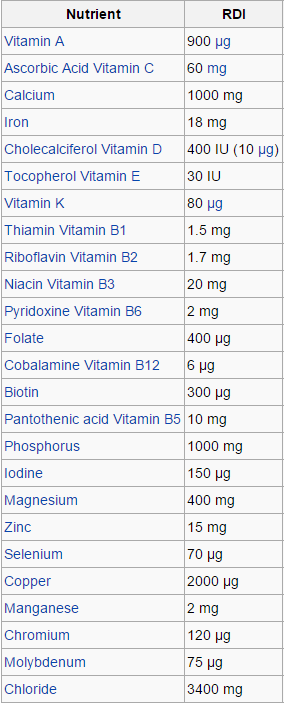The next stop in the Powerlifting Nutrition series is a topic called micronutrition. In other words, what we’re talking about here is “eating healthy” for powerlifting.
If you’d rather watch than read:
Does Eating Healthy Matter for Powerlifting?
Micronutrition tends to be another one of those facets of nutrition that authors use to differentiate their products from other solutions in the marketplace. Basically, fitness “professionals” will try to convince you that eating certain foods, or avoiding certain foods, is the one true key to finally getting the body you’ve always wanted! However, ultimately, unless taken to absolute extremes, micronutrition tends to just take care of itself when you adhere to performance-based macros.
I’ll make practical recommendations in a bit, but first I want to discuss the idea of “healthy”, “clean”, or “paleo” foods. First of all, there is no standard clinical definition for any of these terms. And, when you press proponents of the aforementioned buzzword “diets” to actually define the terms, they frequently produce contradictory definitions that lose all significant meaning. Clinically speaking, there is no such thing as a “bad” food and a “good” food; there are only good and bad diets.

Are you paleo, brah?
Look, I am in favor of high quality foods. I am not suggesting that you go out and eat a diet completely devoid of all fruits, vegetables, and other micronutrient dense calorie sources. The point here is more so that if you’re eating multiple servings of vegetables per day, if you’re eating a few pieces of fruit, and if you’re generally eating a wide variety of foods throughout the week, your micronutrition is likely already excellent. Having the occasional ice cream or cookie is completely irrelevant in the context of a diet that is already rich in micronutrients.
My main point here is that there is absolutely ZERO strong clinical research to suggest that, for example, eating a 100% organic diet has any measurable impact on performance in the gym or body composition. There is absolutely zero clinical evidence that “food quality” makes a statistically significant difference in performance or body composition in general. There are cases of certain health markers improving on various diets, but it is difficult to discern whether many of these improvements are related to the diet or weight loss in general. To get back to the point, improved health markers still do not constitute improved performance or superior body composition results (assuming equivalent macronutrition).
Subjectively, I’ve personally noticed better mood, energy, and sleep quality when making an effort to eat “healthier” and, as such, I’m biased towards high food quality. I’d recommend you try to include the highest possible quality of foods that you can afford. At the same time, you need to realize this probably makes a very, very small contribution to your overall performance in the gym – if makes a contribution at all.
If you’re basing your nutritional selections solely on the idea that only certain foods are “good”, you likely need to stop. More often than not, this type of neurotic behavior leads to a poor relationship with food that has a decent chance of one day developing into a full blown disorder. Keep everything in perspective. Choose foods rich in micronutrients the majority of the time, but allow yourself some flexibility in your diet.
How to Eat Healthy for Powerlifting
While your energy balance and macronutrition is of utmost importance, you cannot afford to completely neglect micronutrition, either. A deficiency in certain vitamins and minerals can manifest in legitimate disease and sickness. On a lower level, you might eventually negatively impact your sleeping patterns, mood, and overall energy levels if you aren’t getting enough vitamins and minerals.

This table is the Federal Food and Drug Administration’s (USA) daily recommendations for vitamins and minerals.
photo: Wikipedia.org
As such, I’d simply recommend making sure that you get at least one serving of fruits AND vegetables per 1,000 calories in your diet. Remember, you need a certain amount of fiber anyways. Ensuring that you’re eating ~2-3 servings of vegetables per day and ~1-2 servings of fruit will go a long ways towards ensuring your micronutrition isn’t out of line.
The last recommendation I’ll make, which isn’t so much of a recommendation as it is a note of caution, do not fall into the trap of eating the same exact foods every single day. When working with clients, I see this type of behavior all the time. Perhaps due to convenience or ease, athletes often fall into the trap of eating the exact same foods every single day and only adjusting the quantities as their macro prescriptions change over time.
Don’t do this long term. I understand that when you’re in the midst of a hardcore diet, this is convenient, but when the calories come back up, and the macros are less scarce, please return to semi-normal eating behaviors.
Lack of variety in food intake is both psychologically unhealthy and one possible way to mess up your micronutrition. You’ll run the risk of simply not getting the full spectrum of vitamins and minerals, or, perhaps more likely, you’ll get too much of the same ones.
In sum:
- Eat a diet consisting of a variety of colors and tastes throughout the week
- Eat 1-2 servings of fruit per day
- Eat at least 2-3 servings of vegetables per day
Relative Importance of Micronutrition for Powerlifting
In one sense, micronutrition is of ultimate importance. If you don’t get enough of certain vitamins, you run the risk of developing certain deadly diseases. On the other hand, if you’re not going out of your way to eat a ridiculous diet consisting of nothing other than sugar, protein powder, and butter, you’re likely not going to deal with serious micronutrition issues.
Please don’t let anyone convince you that you need to eat certain “good” foods to be successful. This is complete bullshit. At the very most, food quality MIGHT have a long term impact, but we see no strong evidence of this in the current literature.
Overall, just make sure you eat a decent amount of fruits and veggies. Eat a varied diet with lots of different colors and flavors. You’ll be just fine. Concentrate on your energy balance and your macronutition because these are the factors that really control your nutritional destiny.
Did you enjoy the Powerlifting Nutrition Series?
If so, I highly recommend you check out our eBook: EatingToWin. The book contains absolutely everything you need to know about how to set up the optimal diet for YOU personally as a powerlifter, how to identify the right weight class to maximize your competitiveness, how to cut weight like a PRO so that you can drop a weight class without performance loss, and, of course, an entire section on recommended supplements with the supporting evidence behind each recommend. Grab your copy now!
Like this Article? Subscribe to our Newsletter!
If you liked this articled, and you want instant updates whenever we put out new content, including exclusive subscriber articles and videos, sign up to our Newsletter!
Questions? Comments?
For all business and personal coaching services related inqueries, please contact me:
[contact-form-7 id=”3245″ title=”Contact form 1″]
Table of Contents
Powerlifting Nutrition: How To Pick Your Weight Class
Powerlifting Diet: Cutting and Bulking
The Best Way To Measure Body Fat For Powerlifting
When To Move Up A Weight Class
How To Cut Weight For Powerlifting: 24 Hour and 2 Hour Weigh Ins
How To Diet For Powerlifting: Calories, Reverse Dieting, and More
Setting Up Your Powerlifting Macros
Meal Frequency and Nutrient Timing in Powerlifting
Eating Healthy for Powerlifting